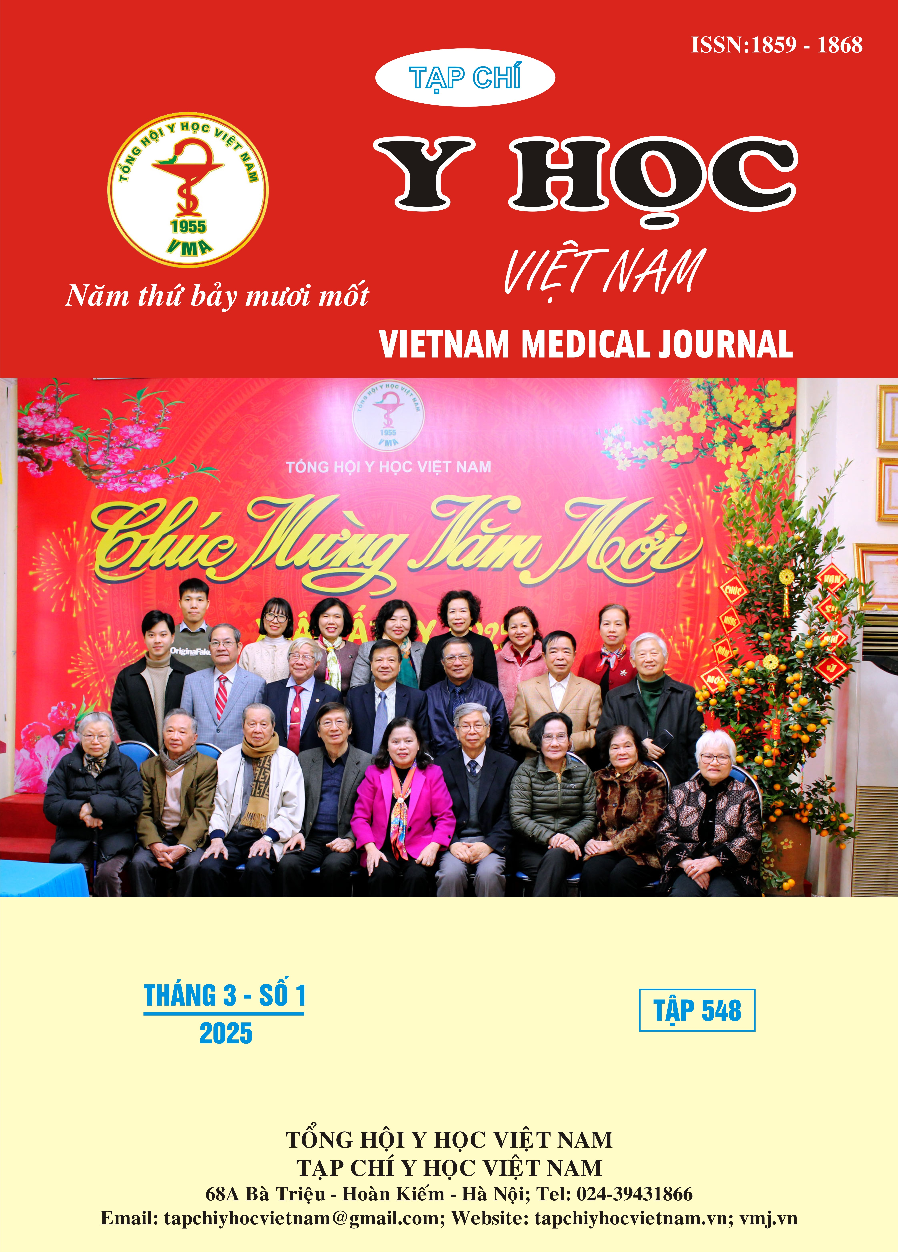FACTORS RELATED TO THE OUTCOME OF ENDOVASCULAR INTERVENTIONAL TREATMENT OF CHRONIC POPLITEAL ARTERY OCCLUSION TASC B IN THE ELDERLY
Main Article Content
Abstract
Objectives: Evaluating factors related to the results of endovascular intervention to treat TASC B femoral-popliteal artery stenosis in the elderly. Methods: Retrospective- case series deciptive study conducted at Cardiovascular and Thoracic Surgery Department, Thong Nhat Hospital. Ho Chi Minh city. Results: From Oct 2022 to Oct 2023, there were 58 cases of chronic arterial occlusion of lower extremities TASC B treated with revascularization by endovascular intervention, average age was 76 ± 10 (42-93); male /female: 40/18; Location of injuries: 36 cases (62.1%) superficial femoral artery, 16 cases (27.6%) popliteal artery, 6 cases (10.3%) 1/3 superior superficial femoral artery and below the knee. Intervention methods: 51 cases (87.8%) antegrade, 7 cases (12.1%) antegrade combined with retrograde. Balloon angioplasty + stenting: 17 cases (29.3%); balloon angioplasty only: 41 cases (70.7%). Technical success rate 93.1%. Advanced age is one of the factors related to treatment failure. Other factors such as smoking and comorbidities did not show any difference. Conclusion: Endovascular intervention to treat TASC B femoral-popliteal artery stenosis has highly successful technical results (93.1%). Advanced age is one of the factors related to treatment failure. Other factors such as smoking and comorbidities did not show any difference between the successful and unsuccessful groups.
Article Details
Keywords
Endovascular intervention, chronic femoral – popliteal arterial occlusion
References
2. Kohi MP, Brodmann M, Zeller T, et al. Sex-Related Differences in the Long-Term Outcomes of Patients with Femoropopliteal Arterial Disease Treated with the IN.PACT Drug-Coated Balloon in the IN.PACT SFA Randomized Controlled Trial: A Post Hoc Analysis. J Vasc Interv Radiol. 2020/09// 2020;31(9):1410-1418.e10. doi:10.1016/j.jvir.2020.05.012
3. Chen J-J, Lin L-Y, Lee C-H, Liau C-S. Age, male gender, and atrial fibrillation predict lower extremity amputation or revascularization in patients with peripheral artery diseases: a population-based investigation. Int J Angiol. 2012/03// 2012;21(1):35-40. doi:10.1055/s-0032-1302437
4. Yu X, Zhang X, Lai Z, et al. One-year outcomes of drug-coated balloon treatment for long femoropopliteal lesions: a multicentre cohort and real-world study. BMC Cardiovasc Disord. 2021/07/03/ 2021;21(1): 326. doi:10.1186/ s12872-021-02127-x
5. Feringa HHH, Bax JJ, Hoeks S, et al. A prognostic risk index for long-term mortality in patients with peripheral arterial disease. Arch Intern Med. 2007/12/10/ 2007;167(22):2482-2489. doi:10.1001/archinte.167.22.2482
6. Voll F, Wolf F, Ingwersen M, et al. Diabetes mellitus and femoropopliteal in-stent restenosis. Vasa. 2022/07// 2022;51(4):247-255. doi:10. 1024/0301-1526/a001006
7. Al-Zoubi NA, Shatnawi NJ, Bakkar L, Al-Sabah M. Endovascular Treatment for Critical Limb Ischemia in Type II Diabetes Mellitus Involving Femoropopliteal and Infrapopliteal Segments: Revascularization Strategy. Vasc Health Risk Manag. 2021 2021;17:69-76. doi:10.2147/VHRM.S298435
8. Majmundar M, Patel KN, Doshi R, et al. Comparison of 6-Month Outcomes of Endovascular vs Surgical Revascularization for Patients With Critical Limb Ischemia. JAMA Netw Open. 2022/08/01/ 2022;5(8):e2227746. doi:10. 1001/jamanetworkopen.2022.27746
9. Bosiers M, Peeters P, D'Archambeau O, et al. AMS INSIGHT--absorbable metal stent implantation for treatment of below-the-knee critical limb ischemia: 6-month analysis. Cardiovasc Intervent Radiol. 2009/05// 2009; 32(3): 424-435. doi:10.1007/s00270-008-9472-8
10. Zhen Y, Chang Z, Liu Z, Zheng J. Platelet to lymphocyte ratio predicting 6-month primary patency of drug-coated balloon for femoropopliteal disease. BMC Cardiovasc Disord. 2020/01/09/ 2020;20(1):9. doi:10.1186/s12872-019-01314-1


